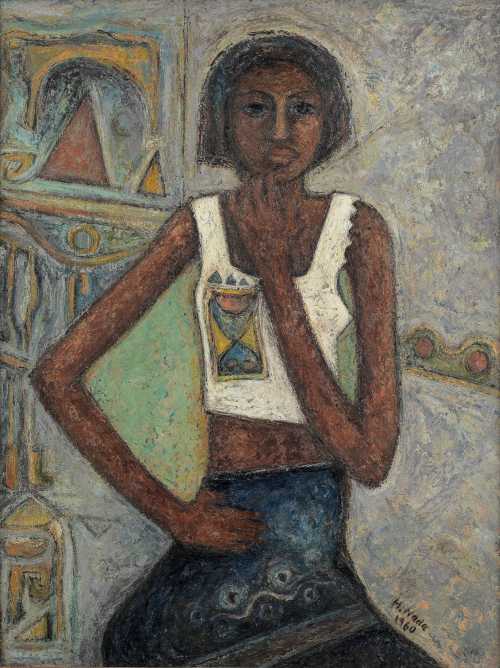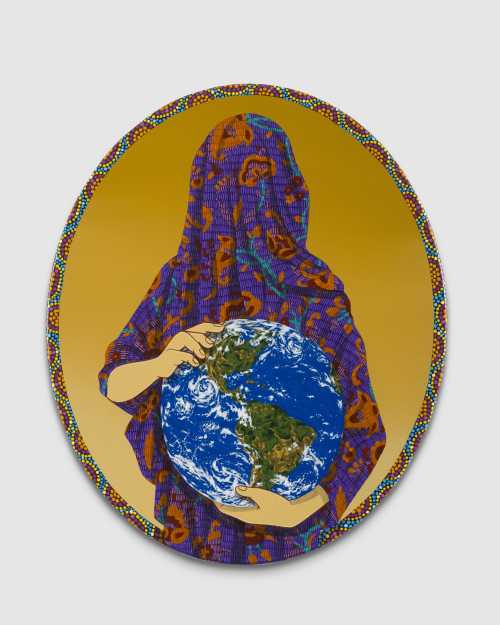- Nubian Girl 1960
- oil on board
- Painting
- 48 * 63 cm
- signed "H.Nada" and dated "1960" (lower right)
This work has been authenticated by the Artist's son
Estimation
£25,000
31,356 USD
-
£35,000
43,898 USD
Unsold
Artwork Description
"Any work of art that does not have surrealist elements is no work of art. In other words, no matter what colour or direction spontaneous expression takes, a work of art can't be devoid of the artist's subjectivity if it is true art." -Hamed Nada cited in Whaatani Newspaper, 1 November 1959.
Hamed Nada was an integral member of the Contemporary Art Group founded by Hussein Youssef Amin (1904-1984) in 1944. The movement explored issues of social realism and surrealism. Like his mentor Youssef Amin , Nada was fascinated by the mural quality of children's drawings, which particularly impressed him while teaching art at primary school in the 1950s as proved by lack of perspective and the figure's stylisation in these works. From the mid-1950s onwards Nada to look at the work of Ragheb Ayad, from the first generation of Egyptian pioneer artists, who had reinterpreted pharaonic art in his portrayals of ordinary Egyptians. Also for inspiration Nada looked to Nubian folk art and African primitive art.
Since the 1970s, Hamed Nada's oeuvre gradually shifted from tragic themes of the struggles of working-class subjects to more joyful and energetic scenes. The colours became more vibrant and the works displayed far more movement and rhythm than before. Both of these works provide you with a unique glimpse into the inner-workings of Nada's lucid imagination and realisation of liberalised Egyptian men and women. A nouveau twist on ancient Egyptian art, Nada incorporates depictions of animals in his works reminiscent of hieroglyphics on ancient tombs, temples and cartouches. His use of animals further commemorates pharaonic mythology, where they existed both in reality and the celestial world.
Hamed Nada was an integral member of the Contemporary Art Group founded by Hussein Youssef Amin (1904-1984) in 1944. The movement explored issues of social realism and surrealism. Like his mentor Youssef Amin , Nada was fascinated by the mural quality of children's drawings, which particularly impressed him while teaching art at primary school in the 1950s as proved by lack of perspective and the figure's stylisation in these works. From the mid-1950s onwards Nada to look at the work of Ragheb Ayad, from the first generation of Egyptian pioneer artists, who had reinterpreted pharaonic art in his portrayals of ordinary Egyptians. Also for inspiration Nada looked to Nubian folk art and African primitive art.
Since the 1970s, Hamed Nada's oeuvre gradually shifted from tragic themes of the struggles of working-class subjects to more joyful and energetic scenes. The colours became more vibrant and the works displayed far more movement and rhythm than before. Both of these works provide you with a unique glimpse into the inner-workings of Nada's lucid imagination and realisation of liberalised Egyptian men and women. A nouveau twist on ancient Egyptian art, Nada incorporates depictions of animals in his works reminiscent of hieroglyphics on ancient tombs, temples and cartouches. His use of animals further commemorates pharaonic mythology, where they existed both in reality and the celestial world.
More lots by Hamed Nada
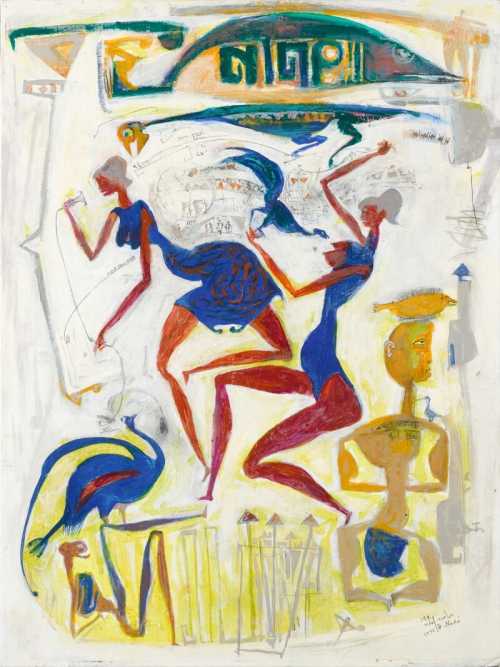
Untitled (The Singers)
Estimation
£30,000
37,253 USD
-
£40,000
49,671 USD
Realized Price
£69,850
86,738 USD
99.571%
Sale Date
Sotheby's
-
25 April 2023
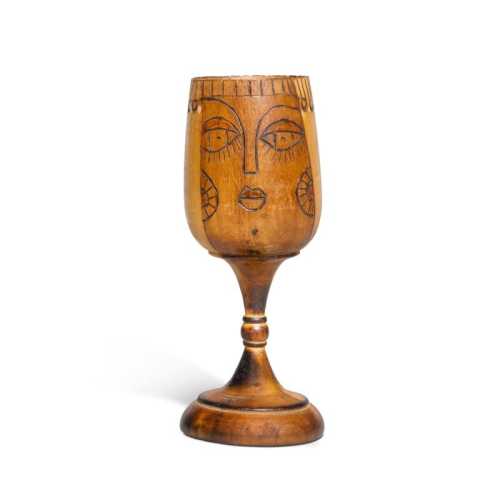
Untitled (Cup)
Estimation
£400
497 USD
-
£600
745 USD
Realized Price
£2,794
3,470 USD
458.8%
Sale Date
Sotheby's
-
25 April 2023
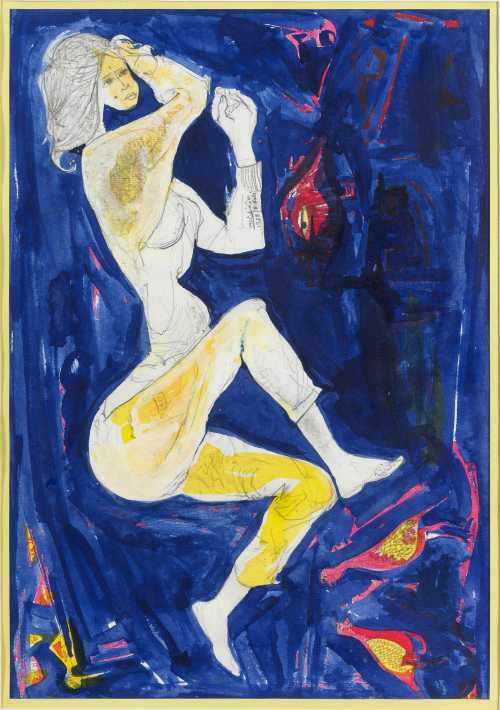
Blue Skies
Estimation
£12,000
16,774 USD
-
£18,000
25,161 USD
Sale Date
Bonhams
-
2 June 2021
Realized Price
74,273 USD
Min Estimate
38,853 USD
Max Estimate
56,754 USD
Average Artwork Worth
+106.158%
Average Growth of Artwork Worth
Sales Performance Against Estimates
Average & Median Sold Lot Value
2021 - 2025
Performance vs. Estimate
2021 - 2025
Sell-through Rate
2021 - 2025
Similar Artworks
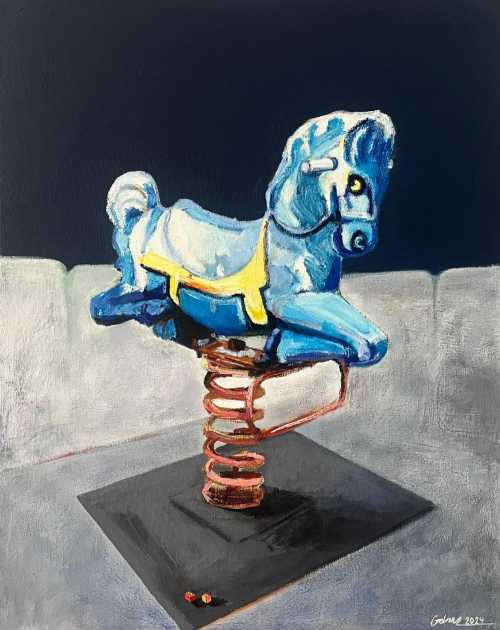
Layer of Beginnings
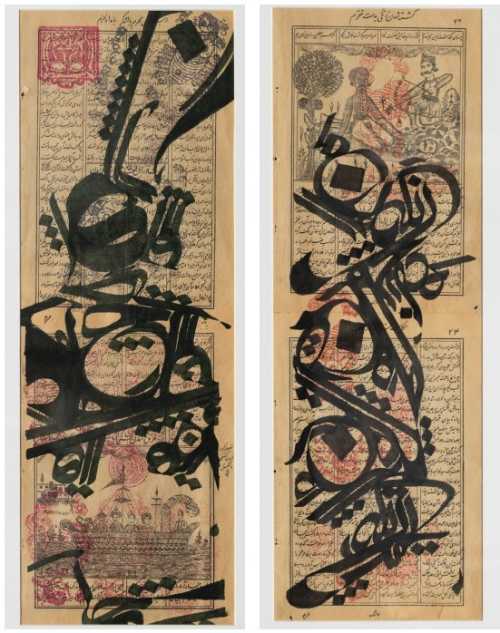
From the heart of a book
Estimation
$800
-
$1,200
Sale Date
AlBahie
-
25 February 2025
